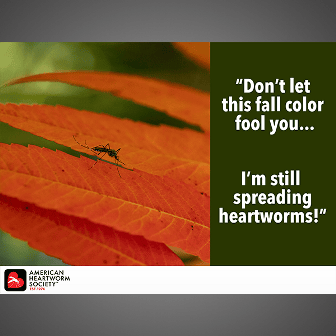Stephen Jones, DVM
Immediate Past President, American Heartworm Society
Lakeside Animal Hospital
Moncks Corner, South Carolina
Open/Download Quarterly as PDF
Q. You have studied the short- and long-term effects of heartworm disease in dogs in order to better understand the pathology it causes. What have you learned?
A. By conducting necropsies of experimentally infected dogs and documenting my findings, I’ve learned that heartworm disease actually begins long before clinical signs are evident—in fact, the damage to the pulmonary vasculature begins before heartworms can be diagnosed with standard antigen tests.
Once the worms reach their adult length of 10 to 12 inches, the larger pulmonary arteries are affected and the disease progresses, with the number of worms present, the duration of the infection, and the activity level of the dog all affecting disease severity. Given time, heartworm infection leads to a significant thickening of the pulmonary arteries, obstructive disease, perivascular inflammation and fibrosis, while natural, random worm death can cause dramatic embolic and inflammatory disease with significant acute and long-term consequences.
Q. While necessary, treatment of adult heartworms can present complications of its own. Can these complications be mitigated?
A. The American Heartworm Society (AHS) protocol recommends concurrent use of a a macrocyclic lactone, doxycycline, and a glucocorticoid to reduce the degree of embolic and inflammatory disease that typify complications of worm death. Restriction of a pet’s activity is also a critical factor in treatment success. Exercise, overheating and excitement during treatment increase blood
flow to blocked vessels, causing capillary delamination, rupture and fibrosis.
While adulticide treatment can result in complications, it is important to eliminate adult heartworm infections as quickly as possible. The AHS protocol was designed to improve the condition of the patient, curtail disease progression and eliminate all stages of heartworms with minimal post-treatment complications.
Q. What should veterinarians take away from these findings?
A. The goal of heartworm treatment is to halt the progression of disease and to substantially resolve the acute disease over time. However, in my necropsy work, I have never seen a dog with a
heartworm infection that didn’t have heartworm disease—and I have never necropsied a dog treated for heartworms that did not have permanent damage, even when the infection occurred
many years before. While many of these dogs remained clinically normal throughout their natural lives, evidence of mummified heartworms remnants along with vascular and pulmonary fibrosis on necropsy offer proof that at least some heartworm disease is lifelong.
It’s important to understand that these observed permanent changes are not the result of adulticide treatment but, rather, a consequence of having had heartworms in the first place. The takeaway should be that year-round, lifelong prevention is one of the most important recommendations veterinarians can give to protect the lifelong health of their patients.








